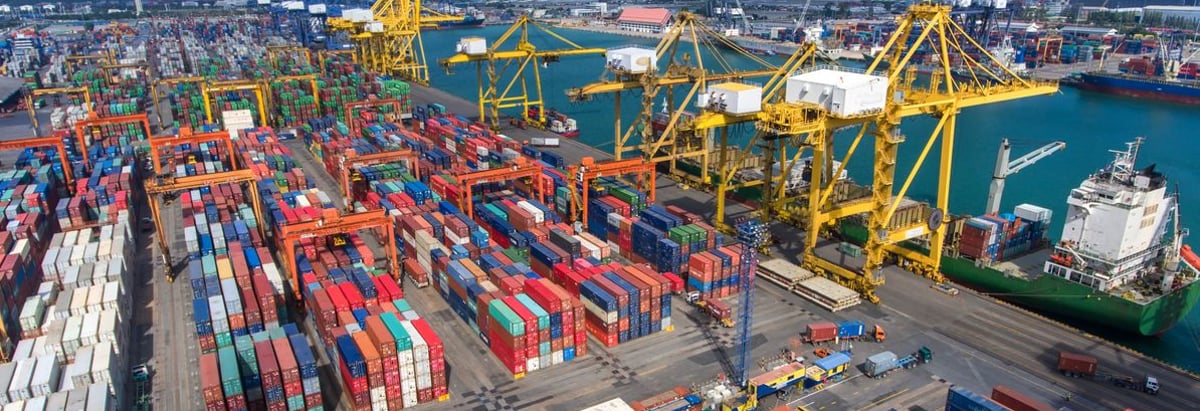
In this analysis, my focus will be on developing a perspective on JITF Infralogistics Limited’s (NSEI:JITFINFRA) latest ownership structure, a less discussed, but important factor. A company's ownership structure is often linked to its share performance in both the long- and short-term. If an activist institution invests the same amount of capital in a stock as a passive long-term pension fund, the implications are potentially different for key corporate financing decisions such as the use of excess cash or the source of financing. While these are more of a long-term investor’s concern, short-term investors may find the impact of institutional trading overwhelming enough to lose out on what could be a potential opportunity. Now I will analyze JITFINFRA's shareholder registry in more detail.
Check out our latest analysis for JITF InfralogisticsInstitutional Ownership
Institutions account for 12.40% of JITFINFRA's outstanding shares, a significant enough holding to move stock prices if they start buying and selling in large quantities, especially when there are relatively small amounts of shares available on the market to trade. These moves, at least in the short-term, are generally observed in an institutional ownership mix comprising of active stock pickers, in particular levered hedge funds, which can cause large price swings. In the case of JITFINFRA, investors need not worry about such volatility considering active hedge funds don't have a significant stake. However, we should dig deeper into JITFINFRA's ownership structure and find out how other key ownership classes can affect its investment profile.Insider Ownership
I find insiders are another important group of stakeholders, who are directly involved in making key decisions related to the use of capital. In essence, insider ownership is more about the alignment of shareholders' interests with the management. JITFINFRA insiders hold a not-so-significant 3.98% stake in the company, which somewhat aligns their interests with that of shareholders. However, a higher level of insider ownership has been linked to management executing on high-returning projects instead of expansion projects for the sake of apparent growth. It would also be interesting to check what insiders have been doing with their shareholding recently. Insider buying can be a positive indicator of future performance, but a selling decision can be simply driven by personal financial requirements.General Public Ownership
A big stake of 25.92% in JITFINFRA is held by the general public. This size of ownership gives retail investors collective power in deciding on major policy decisions such as executive compensation, appointment of directors and acquisitions of businesses. This level of ownership gives retail investors the power to sway key policy decisions such as board composition, executive compensation, and potential acquisitions. This is a positive sign for an investor who wants to be involved in key decision-making of the company.Private Company Ownership
Potential investors in JITFINFRA should also look at another important group of investors: private companies, with a stake of 40.95%, who are primarily invested because of strategic and capital gain interests. With this size of ownership in JITFINFRA, this ownership class can affect the company's business strategy. As a result, potential investors should further explore the company's business relations with these companies and find out if they can affect shareholder returns in the long-term.Next Steps:
JITFINFRA's considerably high level of institutional ownership calls for further analysis into its margin of safety. This will enable shareholders to comfortably invest in the company while avoid getting trapped in a sustained sell-off that is often observed in stocks with this level of institutional participation. However, ownership structure should not be the only focus of your research when constructing an investment thesis around JITFINFRA. Rather, you should be examining fundamental factors such as JITF Infralogistics's past track record and financial health. I urge you to complete your research by taking a look at the following:
- 1. Financial Health: Is JITFINFRA’s operations financially sustainable? Balance sheets can be hard to analyze, which is why we’ve done it for you. Check out our financial health checks here.
- 2. Past Track Record: Has JITFINFRA been consistently performing well irrespective of the ups and downs in the market? Go into more detail in the past performance analysis and take a look at the free visual representations of JITFINFRA's historicals for more clarity.
- 3. Other High-Performing Stocks: Are there other stocks that provide better prospects with proven track records? Explore our free list of these great stocks here.
New: Manage All Your Stock Portfolios in One Place
We've created the ultimate portfolio companion for stock investors, and it's free.
• Connect an unlimited number of Portfolios and see your total in one currency
• Be alerted to new Warning Signs or Risks via email or mobile
• Track the Fair Value of your stocks
Have feedback on this article? Concerned about the content? Get in touch with us directly. Alternatively, email editorial-team@simplywallst.com
Simply Wall St analyst Simply Wall St and Simply Wall St have no position in any of the companies mentioned. This article is general in nature. We provide commentary based on historical data and analyst forecasts only using an unbiased methodology and our articles are not intended to be financial advice. It does not constitute a recommendation to buy or sell any stock and does not take account of your objectives, or your financial situation. We aim to bring you long-term focused analysis driven by fundamental data. Note that our analysis may not factor in the latest price-sensitive company announcements or qualitative material.
About NSEI:JITFINFRA
JITF Infralogistics
Through its subsidiaries develops urban infrastructure and water infrastructure in India and internationally.
Slightly overvalued with imperfect balance sheet.
Market Insights
Community Narratives



